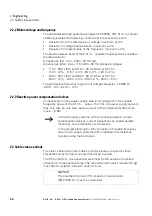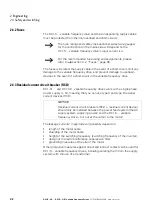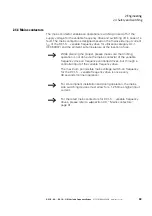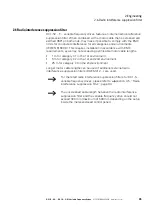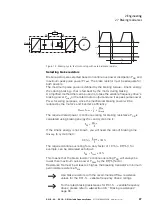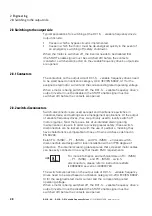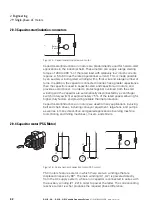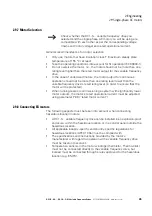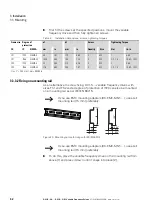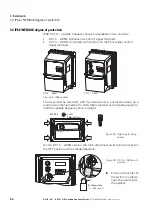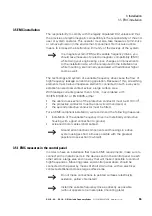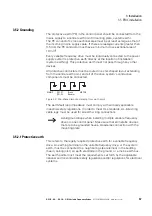
2 Engineering
2.9 Single-phase AC motors
42
DC1-S…20…, DC1-S…OE1 Variable Frequency Drives
05/21 MN040058EN
www.eaton.com
2.9.3 Capacitor-start/induction-run motors
Figure 15: Capacitor-start/induction-run motor
Capacitor-start/induction-run motors are predominantly used for hard-to-start
applications in the industrial field. These motors can supply a large starting
torque of 200 to 400 % of the rated load with relatively low inrush currents
(approx. 4.5 to 6 times the rated operational current). This is made possible
by an auxiliary winding (start winding) with a thick wire and a large number of
turns. In addition, the capacitor connected in series has a greater capacitance
than the capacitors used in capacitor-start and capacitor-run motors, and
provides a start boost. In order to protect against overload, both the start
winding and the capacitor are automatically disconnected by a centrifugal
switch (rotary switch) at approximately 75 % of the rated speed, allowing for
higher duty factors and providing reliable thermal protection.
Capacitor-start/induction-run motors are used in many applications involving
belt and chain drives, including conveyor equipment, large fans, and pumps,
as well as in many direct-drive and geared applications involving machine
tools (boring and milling machines), mixers, and stirrers.
2.9.4 Capacitor motor (PSC-Motor)
Figure 16: Permanent-split capacitor motor (PSC motor)
PSC motors feature a stator in which there are two windings that are
displaced in space by 90°. The main winding (U1, U2) is powered directly
from the AC supply system, while a run capacitor is connected in series with
the auxiliary winding (Z1, Z2) in order to power the latter. The corresponding
reactive current is what produces the required phase difference.
~
Rotary
Swich
U
V
U V
U1
U2
Z2
Z1
M
1∼
U
V
U1
U2
Z2
Z1
M
1∼
U
V
Summary of Contents for DC1-S1011NB-A20CE1 1
Page 4: ......



